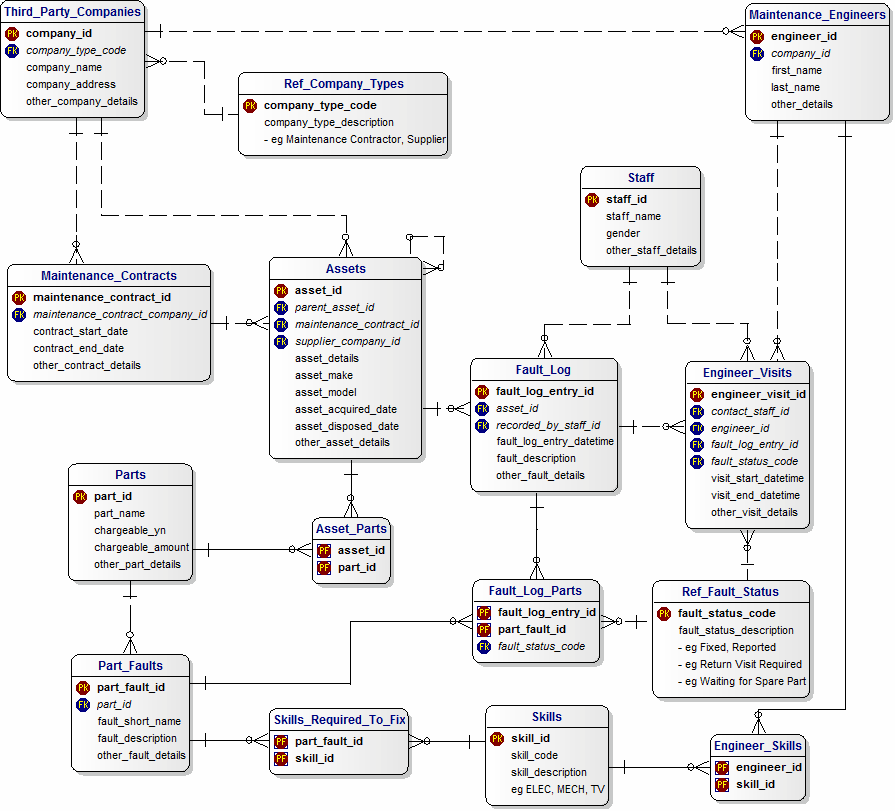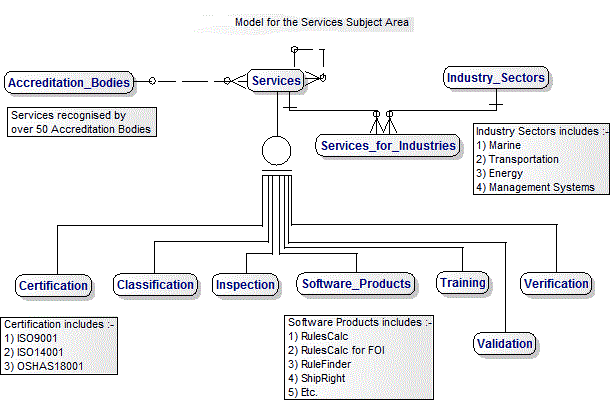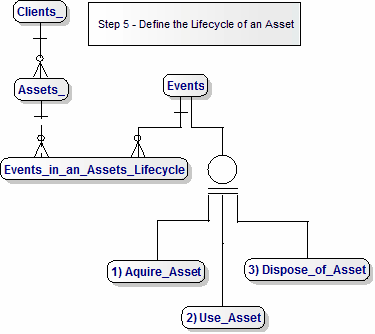Step 1 -
Establish the Semantic Model and describe the functionality :-
"Services are provided to Clients to ensure that their Assets comply with
the appropiate Rules and Regulations.
|

|
1. Assets
At first, we chose our Product Catalogs Data Model,
because we wanted to model hierarchies,
but then we decided that we needed a more flexible approach than
fixed hierarchies, so we decided that Assets Maintenance is more suitable.
|

|
2. Clients
We have only one Party-related Data Model in our Library but it is a generic solution.
We are happy to use it for our requirements, which include corporate Clients and
personal Staff members, as well as (perhaps) Suppliers.
Therefore, we wil use our Data Mode for Parties, Roles and Customers.
|

|
3. Client Services
Our requirement is to model a situation where we have many Clients who can request any
number of Services from a wide range of Services.
There will usually be criteria that indicate which Services are relevant.
The most general and useful solution is our Data Model for Generic Customers and Services.
|

|
4. Documents
we have a number of Document-related Models in our Library so for the
moment we use the one for Generic Document Management.
The Documents will include Reports and results of Assessments and
ISO Certifications |

|
5. Pricing
we have a Data Model for generating Financial Statements.
This is driven by Chart of Accounts and General Ledgers.
|

|
6. Schedules
We have a number of Asset-related Models but we have chosen this one, which
is specifically for Asset Schedules.
|

|
7. Services
we have many Data Models for Services and we have chosen this one for Services.
|

|
8. Workflow
we have a Data Model for Workflow.
|

|
An additional Model for the Lifecycle of an Asset
Following an Event-oriented Approach
|

|
Step 10 - Finally, create the 'Business-friendly' Semantic Model
This is specifically designed to be the 'Business-friendly' and to provide a
vehicle for communication with business users and Subject Matter Experts.
We have not shown the 'Rabbits-Ears' to keep the diagram simple and
easier to understand. |

|

